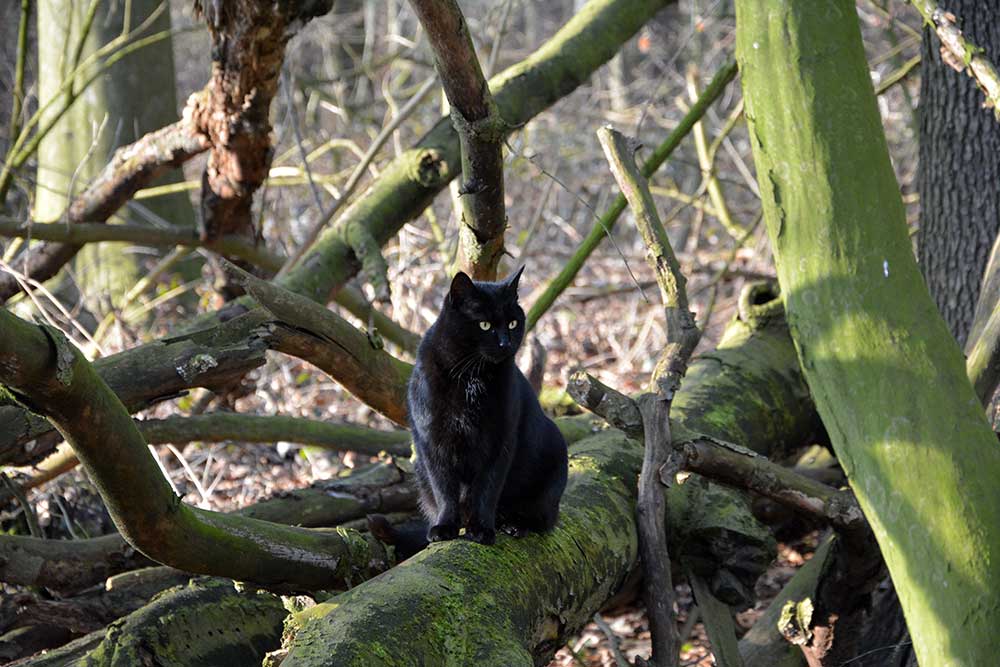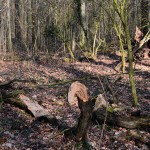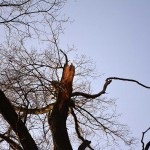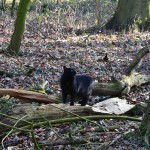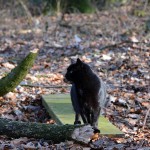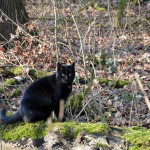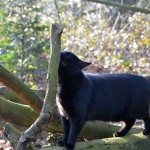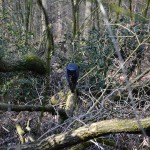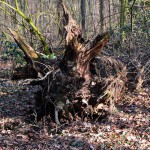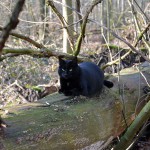32% of Germany is covered with forests which makes it one of the most wooded countries in the EU. But none of these forest are primeval anymore. All have been touched by us humans in one way or another. Today you can find everything from wood plantations to close-to-nature national parks.
Forests are not only necessary to improve air quality but they also support more species than other areas. The typical mixed beech forests that are native to the west of Germany are home to about 4.300 different plants and fungi and more than 6.700 animal species. 25% of these organisms live on, in, with and from deadwood. As commerical forests are rather tidy, protected areas with restriced use are extremely important. „Our“ forest has been a nature reserve since 2007. Amongst other things this means that the forest can evolve naturally, without intervention and uprooted treas and fallen branches are left where they have fallen.
So after all those editions with climbing ashes, forest clinics and Maplewood studios it is high time that I introduce you to the forest itself. Actually, you are supposed to stay on the main paths but I promise that I have not walked far into the woods and I have also used a trail the hunters have made. I was also able to secure the invaluable services of a real forest ranger who knows the wood by day and night like the back of his paw and as I have taken such a lot of pictures, a second part will follow next week.
————–
Wusstet ihr, dass 32% unseres Landes mit Wald bewachsen ist? Damit gehört Deutschland zu den waldreichen Ländern in der EU. Allerdings: Es gibt keinen Urwald mehr bei uns. Das heißt auf jeden der rund 11,1 Millionen Hektar hat der Mensch mehr oder weniger stark eingewirkt. Von regelrechten Holzplantagen bis zu naturnahen Nationalparks ist bei uns alles zu finden.
Wälder sind nicht nur wichtige grünen Lungen, sie sind auch der Lebensraum mit der höchsten Artenvielfalt. In den für uns typischen Buchenmischwäldern kommen gut 4.300 Pflanzen und Pilzarten und mehr als 6.700 Tierarten vor. Dabei leben 25% dieser Organismen an, mit, auf und vom Totholz. Weil es in einem Wirtschaftswald eher aufgeräumt zugeht, sind Schutzzonen, in denen es Nutzungseinschränkungen gibt, so besonders wichtig. „Unser“ Wald ist seit 2007 ein Naturschutzgebiet. Das bedeutet unter anderem: Er wird seiner natürlichen Entwicklung überlassen und entwurzelte Bäume und heruntergefallene Äste bleiben liegen.
Nach den ganzen Ausgaben mit Klettereschen, Waldkliniken und Maplewood-Studios wird es also höchste Zeit, dass ich euch endlich den Wald selbst vorstelle. Eigentlich soll man auf den Wegen bleiben, aber ich bin quasi am Waldrand geblieben und einem bestehenden Trampelpfad der Jäger gefolgt. Außerdem ist es mir gelungen, mir die Dienste eines fachkundigen Waldführers zu sichern, der den Wald zu jeder Tages- und Nachtzeit kennt, wie seine Westentasche. Weil ich so viele Bilder gemacht habe, gibt es nächste Woche noch einen zweiten Teil.
Bis morgen!
Sybilla

